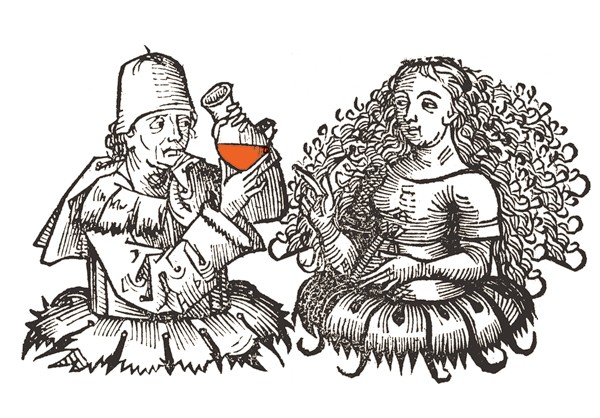
- Is it good for windmills and gilding, too?
Jan. 16. January Men, you have made it halfway through the month. Do not, under any circumstances, start imagining your first bitterly, shockingly, bracingly cold drink quite yet.
Jan. 17. On Nov. 2, 1983, a Republican president named Ronald Reagan signed into law a bill making today a federal holiday in honor of Martin Luther King, Jr. Another Republican president, George H. W. Bush, further institutionalized the holiday by declaring that it should be celebrated on the third Monday of each January. All three of those men seem now to belong to quite a different time.
Jan. 18. The calamondin is an attractive little citrus tree producing a type of sour, acidic orange fruit that could stand in for a lime in a pinch. It grows quite contentedly indoors, producing fruit year-round under favorable conditions. Like most citrus, it requires a bright, sunny window, fairly dry soil and specially made citrus fertilizer that includes iron and copper. The fruit is reportedly used as a body deodorant in the Philippines. We have no personal experience with the use of fruit in the suppression of bodily odors.
Jan. 19. Full moon at 1:22 p.m., a time when no one will fully appreciate it.
Jan. 20. Your horoscope today: Assume an inverted posture before each meal. An unexpected encounter with a large bird will introduce a romantic interest. You will be startled into wakefulness at 2 a.m. by an important realization about a business acquaintance, but you will be unable to recall the particulars in the morning.
Jan. 21. Consider seriously a bed of asparagus. The roots are for sale now at garden centers, and the pleasure of digging around in a tub of dirt to choose the finest specimens is one of the unexpected delights of gardening in January. Don't bother with much digging; simply knock back the weeds and pile up a good 12 inches of well rotted compost. Top it off with a few bags of something weed-free -- finely screened manure, soil conditioner and so forth. Mix in plenty of all-purpose organic fertilizer as you do it. Set the roots right into this mix, and be prepared to add a new layer of mulch once a year to keep the weeds down. A good asparagus bed will feed a family for a decade or more; see if you're not tempted to add another dozen or so crowns every year around this time.
Jan. 22. A recent study shows that drinking beet juice allows people to exercise 16 percent longer. Unfortunately, most people want neither to drink beet juice nor to exercise 16 percent longer.
Jan. 23. A cure for love has been offered. It requires a pinch of indifference, powder of disdain, a sprinkling of absenteeism, several sprigs of self-righteousness and indignity and a clarified solution of ill-temper, taken just before retiring. Those who follow the directions precisely are guaranteed to be unloved and perhaps turned out of bed before morning comes.
Jan. 24. Chickens, we have learned, are quite terrified by umbrellas.
Jan. 25. This time of year, rhododendrons ask for little more than a bit of fertilizer made for acid-loving plants. They will bloom even if we forget to grant them this one simple favor. Try not to tread on their roots or pave over them; they grow quite near the surface and like to imagine that they are in a forest, not a city, bearing nothing but the light foot traffic of small rodents.
Jan. 26. A newly-discovered species of carnivorous petunia could turn patio hanging baskets into potential killers. A giant otter, now extinct, is believed to have once subsisted on ostrich eggs. A new sort of sea slug has been found in Santa Barbara, much to the excitement of sea slug scientists everywhere.
Jan. 27. A recipe for a hair restorative calls for equal parts sugar of lead, borax and lac-sulfur, combined with small quantities of aqua ammonia, alcohol, bay rum, table salt, soft water and essence of bergamot. The author of this recipe claims it will give a beautiful gloss to hair, cause hair to grow upon bald heads and turn gray hair a dark color.
Jan. 28. Hens' teeth are not as rare as one might think; a recessive gene found in all chickens can be turned on under laboratory conditions, resulting in the formation of teeth during the embryo stage.
Jan. 29. A red salve may be mixed as follows to cure rot in sheep: Combine honey, burnt alum and Armenian bole with train or fish oil until a paste is formed. Apply as needed.
Jan. 30. Armenian bole may also be applied to windmills and to the binding of books before gilt is added.
Jan. 31. The January Man may, at long last, begin to imagine the clinking of ice in the glass. The gardener may consider the sprouting of seeds under a bright light. New uses for Armenian bole may yet be found. Spring is approaching, however slowly; we may be cautiously optimistic.
Comments